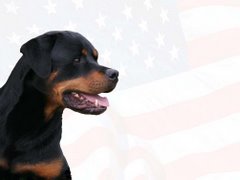Deterrence, De-escalation, Defense
Deterrence
Having a family guard dog is a good way to discourage criminals from wanting to mess with you in the first place. You become a more difficult target, and more of a problem for them if they have to deal with your dog. This role of a guard dog is known as deterrence.
Realistic deterrence situations are as follows: Discouraging burglars when they case your premises, making someone think twice before trying to forcefully enter your premises, making someone think twice before attempting to rob, or attack you, while you are out in public.
De-escalation
Certain potentially hostile situations can be diffused with the presence of a family guard dog. This role is known as de-escalation. The dog can be a subtle, yet powerful, stimulus to neutralize people and make them more polite and cooperative than they might otherwise be. A key element here is that the dog has to be calm and under your total control (preferably on leash) so that it appears you are the gatekeeper protecting them from your potentially dangerous dog. Police K-9 take advantage of this all the time to make suspects peacefully cooperate.
A realistic scenario of de-escalation is confronting trespassers with your guard dog in tow (on leash). Without a dog they might challenge you, but with a calm and confident guard dog at your side they will more than likely act very polite and be cooperative effectively de-escalating a potentially dangerous confrontation.
"To control aggression without inflicting injury is the art of peace"- Morihei Ueshiba
You cannot use more force than is used against you because in the USA guard dogs can only be used for self-defense. This means you cannot use your dog to protect you against someone who is no longer a threat.
Ideally, in any hostile encounter involving a guard dog you would want try to follow these steps before resorting to defense:
1) try to deter the threat by avoiding/leaving the situation
2) try to de-escalate any situation you can't escape from
3) raise the level of your dogs aggression in stages to counter inescapable threats with appropriate force.
To raise aggression in stages means to first give a verbal warning to the assailant that your dog will protect you. Then if the threat persists, get your dog to bark and growl. Then if you are attacked, allow your dog to fight to protect you until the attack stops, then you must stop your dog at this point.
Just remember that you have to be able to justify your actions as self defense or you, and your dog, could be in big trouble.
